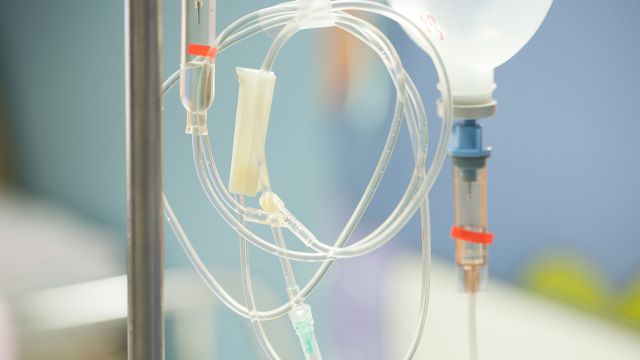While there is no cure for Waldenstrom macroglobulinemia, there are numerous treatments available that can help slow progression, alleviate symptoms, and reduce the risk of complications that can result from having this type of non-Hodgkin lymphoma.
As with many other diseases, treatment for WM will be different for every person, and there is no single treatment approach that is right for everyone. Deciding when and how you treat will be a decision you make with your healthcare provider, and it will take into account many different factors.
Here, we look at some of the therapies that are used to treat WM.
Chemotherapy
Chemotherapy uses drugs that destroy cancer cells and prevent cancer cells from growing. These medicines vary in the way they are administered—some are taken as pills, others as infusions. Different chemotherapy drugs may be used in combination with one another, and in combination with other cancer treatments.
Immunotherapy or biologic therapy
Immunotherapies or biologic therapies are anti-cancer drugs that help the body’s immune system detect and attack cancerous cells. Monoclonal antibodies are one example, and are used in the treatment of WM. Antibodies are proteins made by the immune system that target harmful substances that don’t belong in the body (like cancerous cells). Monoclonal antibodies are lab-made versions of antibodies, which can be delivered into the body and help the immune system target cancer.
Targeted therapy
Targeted therapies work by blocking the cellular processes that cancers depend on to survive, grow, and spread. Targeted therapies can be used on their own or used in combination with chemotherapy drugs. Several targeted therapies are available for the treatment of WM.
Plasma exchange
You may also hear this treatment referred to by its clinical name, plasmapheresis. WM is associated with abnormally high levels of an antibody called immunoglobulin M (IgM). Too much IgM can thicken the blood, impeding normal circulation, a condition called hyperviscosity syndrome. This can lead to serious symptoms and complications—such as abnormal bleeding, dizziness or confusion, stroke, and congestive heart failure.
Plasma exchange can be used to treat hyperviscosity syndrome. During the procedure, blood is drained from an IV line or catheter, and then travels into a machine that separates blood cells and plasma. IgM is filtered out, harmful proteins are removed, and a protein solution with albumin is added. The mixture is returned to the body through a different IV line. This process will be repeated daily until symptoms subside or the person’s serum viscosity level is normal.
Stem cell transplant
A stem cell transplant is sometimes used to treat WM—though it is not common, and usually only recommended for people who are younger who have tried other treatments without success.
The type of stem cell transplant used to treat WM is called an autologous stem cell transplant. The procedure involves collecting healthy stem cells from the person being treated. These stem cells are stored while the person undergoes high doses of chemotherapy and/or radiation therapy to kill off cancerous WM cells. The stem cells are then reintroduced to the body.
Watchful waiting
Deciding when to treat can be as important as deciding how to treat. WM is often described as an indolent cancer, meaning it progresses slowly. It can take time before a person has symptoms.
If a person is found to have WM, but is not currently experiencing symptoms, a healthcare provider may recommend a “watchful waiting” approach where the condition is closely monitored, but not treated with the therapies described above. If symptoms do appear, a person can then decide on treatment options with their healthcare provider.




